Hedonic shopping transforms the mundane act of buying into an exhilarating experience, where every purchase is a celebration of joy and self-expression. Here’s an interesting statistic. So, according to a study by McKinsey, 62% of consumers worldwide seek experiences that spark joy and excitement when making purchases.
A new wave of shoppers is emerging amidst the bustling aisles of both virtual and physical stores. No longer bound by necessity, they seek something deeper and much more valuable—a journey of pleasure and indulgence.
Enter the realm of hedonic shopping, where the thrill of the experience takes precedence over mere acquisition. In this article, we delve into the psyche of these pleasure-seekers, uncovering the driving forces behind their purchasing decisions and the unique value they place on their shopping experiences.
Let’s dive in without any further ado!
Who are Hedonic Shoppers?

Hedonic shoppers are not merely consumers but seekers of pleasure, entertainment, and emotional gratification. Unlike their utilitarian counterparts, they view shopping as an immersive experience—a means of escape from their everyday reality and self-expression.
According to Hirschman & Holbrook, these shoppers are drawn to the multisensory, fantastical, and emotional dimensions of consumption, where shopping becomes a form of entertainment.
What is Hedonic Value?
At the heart of hedonic shopping lies the concept of hedonic value—an intrinsic sense of enjoyment, pleasure, and emotional satisfaction derived from the shopping experience. Unlike utilitarian value, which is tied to the practicality or functionality of a product, hedonic value is rooted in luxury, aesthetics, and sensory pleasure.
Research shows that hedonic values significantly influence consumer satisfaction and loyalty, intertwining seamlessly with utilitarian values to create a holistic perception of product worth.
Products Suitable fro Hedonic Shopping:
1. Virtual Reality
Virtual Reality (VR) Shopping Experiences have revolutionized the way customers interact with online stores, offering immersive and innovative ways to engage with products without leaving the comfort of their homes. This cutting-edge technology allows shoppers to experience products virtually, providing a more realistic and interactive shopping experience.
Key Features of Virtual Reality Shopping Experiences:
- Immersive Product Interaction: VR technology enables customers to interact with products in a three-dimensional space, offering a realistic representation of how they would look or function in real life.
- Virtual Try-On: One of the most popular applications of VR in online shopping is virtual try-on, particularly in the fashion and beauty industries. Customers may virtually try on clothes, accessories, or makeup products, allowing them to see how items look on them before making a purchase.
- Digital Store Tours: Some online stores offer virtual tours of their physical locations, allowing customers to explore the store layout and browse products as if they were actually there. This feature provides a sense of immersion and familiarity, enhancing the overall shopping experience.
- Personalized Recommendations: VR shopping experiences can be customized based on customer preferences and behavior, providing customized product recommendations and suggestions tailored to individual needs and interests.
- Enhanced Engagement: By offering immersive and interactive experiences, VR shopping experiences increase customer engagement and retention, encouraging shoppers to spend more time exploring products and making informed purchasing decisions.
Example: Sephora
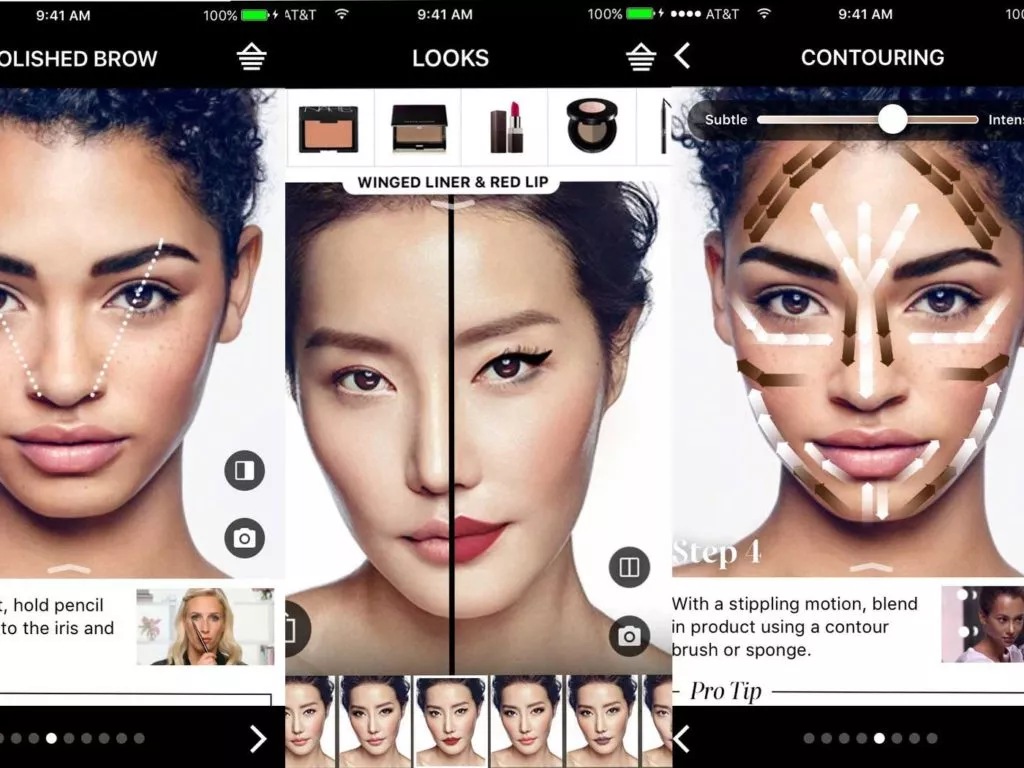
Sephora, a leading beauty retailer, is known for its innovative online shopping experiences, particularly in virtual try-ons for makeup products. Through Sephora’s main website, customers can access virtual try-on features to test different makeup looks using augmented reality (AR) technology.
Using their smartphone or computer camera, customers can see how various makeup products, such as lipstick, eyeshadow, and foundation, would look on their faces in real time. This interactive experience enables customers to experiment with different colors and shades, helping them make confident purchasing decisions.
Learn more about the buyer’s remorse here.
2. Interactive Personlization Tools
Interactive Customization Tools enhance the shopping experience by allowing customers to personalize products, according to the customer preferences, creating a sense of ownership and uniqueness. These tools empower customers to design their items, such as shoes or gifts, fostering creativity and engagement.
Key Features of Interactive Customization Tools:
- Personalization Options: Customers can customize various aspects of the product, such as colors, materials, and designs, to create a personalized item reflecting their style and preferences.
- User-Friendly Interface: The customization process is quite intuitive and user-friendly, allowing both, the tech savvy and the non-techie customers to easily navigate options and make product changes according to their preferences.
- Real-Time Visualization: Interactive customization tools often include features that provide real-time visualization of the customized product, allowing customers to see how their changes affect the final outcome.
- Feedback and Confirmation: Customers receive feedback and confirmation throughout the customization process, ensuring that their choices are accurately reflected in the final product.
- Seamless Integration: Customization tools seamlessly integrate with the overall shopping experience, allowing customers to add their personalized items to their cart and proceed to checkout without any hassle.
Example: Nike By You
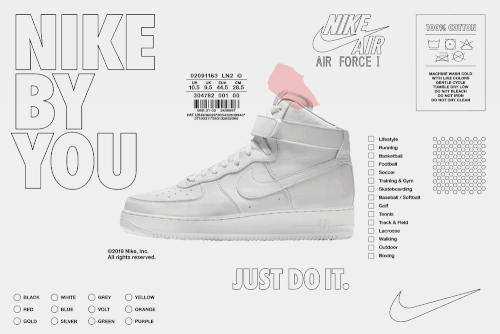
Nike By You is a customization service offered by Nike that allows customers to design their own sneakers. Through the Nike website, customers can access the Nike By You platform, where they can choose from a variety of customizable options, including colors, materials, and design elements.
Using an intuitive online interface, customers can personalize every aspect of their sneakers, from the color of the laces to the pattern on the shoe. Real-time visualization features allow customers to see their design come to life before making a purchase, ensuring they are satisfied with final product.
Nike By You offers a unique and engaging shopping experience that empowers customers to express their individuality and creativity through custom-designed sneakers.
3. Online auctions
Participating in online auctions for rare or unique items adds an exhilarating dimension to the shopping experience. The thrill of bidding against others and the anticipation of winning create a dynamic and competitive atmosphere.
Key Features of Online Auctions and Bidding Sites:
- Wide Range of Items: Online auction platforms offer a diverse selection of items, ranging from collectibles and antiques to electronics and fashion items, catering to various interests and preferences.
- Bidding System: Users can place bids on the items they are interested in, with highest bidder winning the auction. The bidding process typically involves setting a maximum bid and automatically increasing bids in increments until the maximum is reached.
- Real-Time Updates: Users receive real-time updates on the status of their bids, including notifications when they have been outbid or when they have won an auction, keeping them engaged and informed throughout the process.
- Seller and Buyer Protection: Most online auction platforms provide seller and buyer protection policies to ensure a secure and trustworthy transaction process, including measures such as fraud protection, dispute resolution, and secure payment options.
- Community Engagement: Online auctions foster a sense of community among users, allowing them to interact with fellow bidders, share experiences, and participate in discussions related to the items up for auction.
Example: eBay
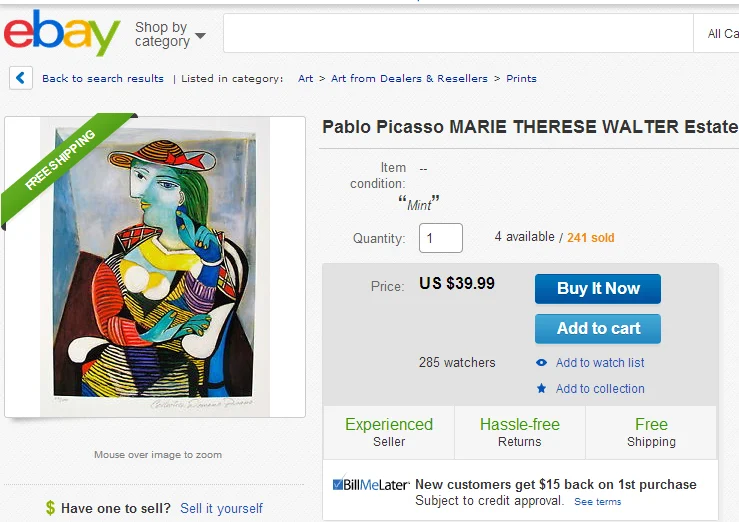
eBay is a leading platform for online auctions, offering a vast array of items across various categories. Users can browse through listings, place bids on items they desire, and engage in bidding wars with other users. eBay’s user-friendly interface, comprehensive search functionality, and secure payment options make it a famous choice for both buyers and sellers.
4. Flash Sale and Deal Websites:
Participating in flash sales or taking advantage of limited-time offers on websites injects a sense of exhilaration and urgency into the shopping journey. The opportunity to snag a great deal within a constrained time frame heightens anticipation and transforms the shopping experience into a thrilling event.
Key Features of Flash Sale and Deal Websites:
- Limited-Time Offers: Flash sale and deal websites feature time-sensitive promotions, with discounts and deals available for only a short duration. This creates a sense of urgency among shoppers, compelling them to act quickly to secure the offer.
- Wide Variety of Products: These websites often offer a diverse range of products, including electronics, fashion items, home goods, travel packages, and more, catering to a wide audience with varied interests and preferences.
- Discounted Prices: Flash sales and deals typically feature significantly discounted prices, allowing shoppers to enjoy substantial savings on their purchases compared to regular retail prices.
- Exclusive Offers: Some flash sales and deal websites offer exclusive deals and promotions not available elsewhere, providing shoppers unique opportunities and savings.
- User-Friendly Interface: Flash sale and deal websites typically feature intuitive interfaces that make it easy for shoppers to browse, discover, and purchase products. Clear navigation, streamlined checkout processes, and responsive design enhance the overall user experience.
Example: Groupon

Groupon is a renowned platform known for its time-limited deals and discounts on a wide range of products and services. Users can explore daily deals tailored to their location and interests, ranging from restaurant vouchers and spa packages to travel getaways and consumer electronics. Groupon’s intuitive platform, extensive selection of deals, and attractive discounts make it a famous choice for savvy shoppers seeking value and excitement.
5. Subscription Box Services:
Subscribing to monthly subscription boxes introduces an element of surprise and delight into the shopping experience. Every month, subscribers receive a curated selection of products tailored to their preferences, allowing them to discover new items and brands while indulging in the pleasure of anticipation.
Key Features of Subscription Box Services:
- Personalized Curation: Subscription box services curate each box based on the subscriber’s preferences, ensuring that the contents align with their interests, tastes, and lifestyle.
- Variety of Categories: Subscription boxes cover various categories, including beauty products, skincare, fashion accessories, gourmet foods, books, and more, catering to diverse interests and preferences.
- Convenience: Subscribers enjoy the convenience of having curated products delivered directly to their doorstep regularly, eliminating the need to shop for individual items and saving time and effort.
- Surprise Element: The surprise element of not knowing exactly what will be included in each box adds an element of excitement, making the unboxing experience highly enjoyable.
- Exclusive Products: Some subscription box services offer exclusive or limited-edition products not available for purchase elsewhere, providing subscribers with access to unique items and experiences.
Example: Birchbox
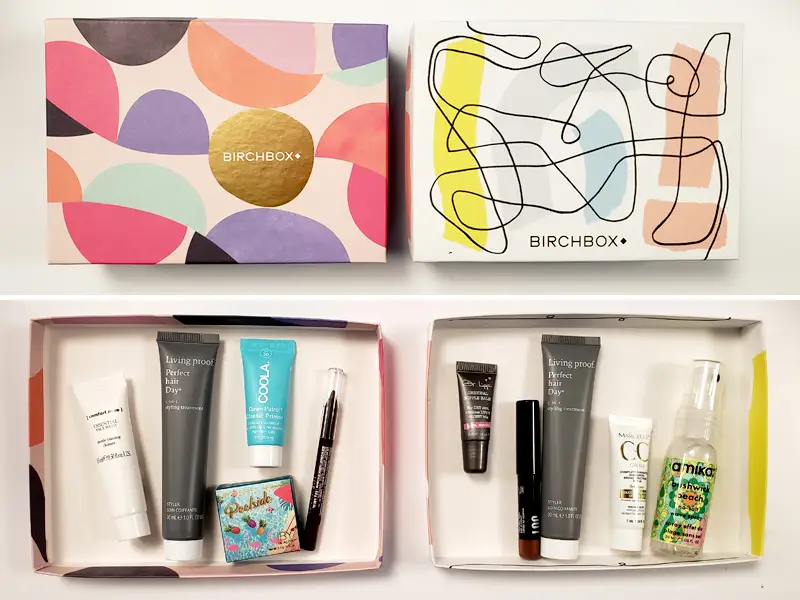
Birchbox is a popular subscription box service specializing in beauty and grooming products. Subscribers receive a curated selection of personalized beauty product samples each month, allowing them to discover new brands and products tailored to their skincare and beauty needs. Birchbox’s emphasis on customization, high-quality samples, and surprise factor has made it a favorite among beauty enthusiasts seeking a convenient and enjoyable shopping experience.
6. Social Shopping Platforms:
Social shopping platforms merge e-commerce with social media, allowing users to engage with products in a community-driven environment. These platforms enable users to share, like, comment, and review products, fostering a sense of connection and community among shoppers.
Key Features of Social Shopping Platforms:
- Social Integration: Integration with social media platforms allows users to share products with the social network, seek recommendations from friends, and engage in discussions about products and purchases.
- User-generated Content: Social shopping platforms often feature user-generated content such as reviews, ratings, and photos, providing valuable insights and recommendations to other shoppers.
- Community Building: These platforms cultivate user community, fostering connections and interactions through shared interests and shopping experiences.
- Personalization: Many social shopping platforms offer personalized recommendations based on users’ browsing history, purchase behavior, and social interactions, enhancing the shopping experience and facilitating product discovery.
Example: Etsy
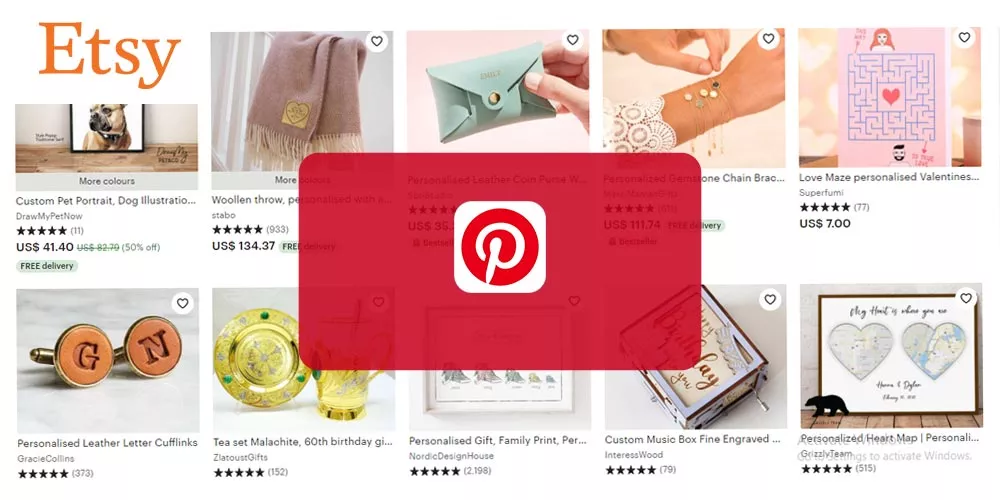
Etsy is a popular online marketplace that connects independent artisans and crafters with buyers worldwide. The platform features social elements such as user reviews, favorites, and seller profiles, allowing users to engage with sellers and products in a social context. Etsy’s community-driven approach creates a vibrant and supportive ecosystem for artists and shoppers.
7. Online Art Galleries and Digital Exhibitions:
Online art galleries and digital exhibitions provide art enthusiasts with a virtual platform to explore and purchase worldwide artworks. These platforms offer a curated selection of artworks across various styles, genres, and mediums, making art accessible to a global audience.
Key Features of Online Art Galleries and Digital Exhibitions:
- Global Access: Online art galleries offer access to artworks from around the world, allowing users to discover diverse artists and styles without geographical limitations.
- Curated Collections: Art galleries curate collections of artworks, providing users with a curated browsing experience and facilitating discovery of new artists and artworks.
- Interactive Features: Some online art galleries incorporate interactive features such as virtual tours, artist interviews, and behind-the-scenes content, enhancing the overall browsing experience and engagement with artworks.
- Secure Transactions: Online art galleries prioritize secure transactions and offer various payment options to ensure a safe and convenient purchasing process for buyers.
Example: Saatchi Art

Saatchi Art is an online art gallery that offers a broad selection of contemporary artworks from emerging and established artists worldwide. The platform features curated collections, artist profiles, and virtual exhibitions, allowing users to explore and purchase art from the comfort of their homes. Saatchi Art’s commitment to promoting emerging artists and offering a seamless online shopping experience has made it a trusted destination for art enthusiasts.
8. Online Themed Stores:
Online themed stores cater to niche markets and specific interests, offering a curated selection of products tailored to enthusiasts and collectors. These stores specialize in products related to particular themes, fandoms, hobbies, or interests, providing a unique shopping experience for passionate consumers.
Key Features of Online Themed Stores:
- Niche Selection: Themed stores focus on specific themes, genres, or fandoms, offering a curated selection of products that appeal to enthusiasts and collectors within those niches.
- Exclusive Merchandise: Many themed stores offer exclusive merchandise, limited-edition items, and collectibles unavailable elsewhere, attracting dedicated fans and collectors.
- Community Engagement: Themed stores often foster community engagement through forums, blogs, and social media channels, allowing fans to connect, share their passion, and interact with like-minded individuals.
- Brand Partnerships: Some themed stores collaborate with brands, artists, and influencers to create exclusive products and collaborations, enhancing the store’s appeal and attracting new customers.
Example: ThinkGeek
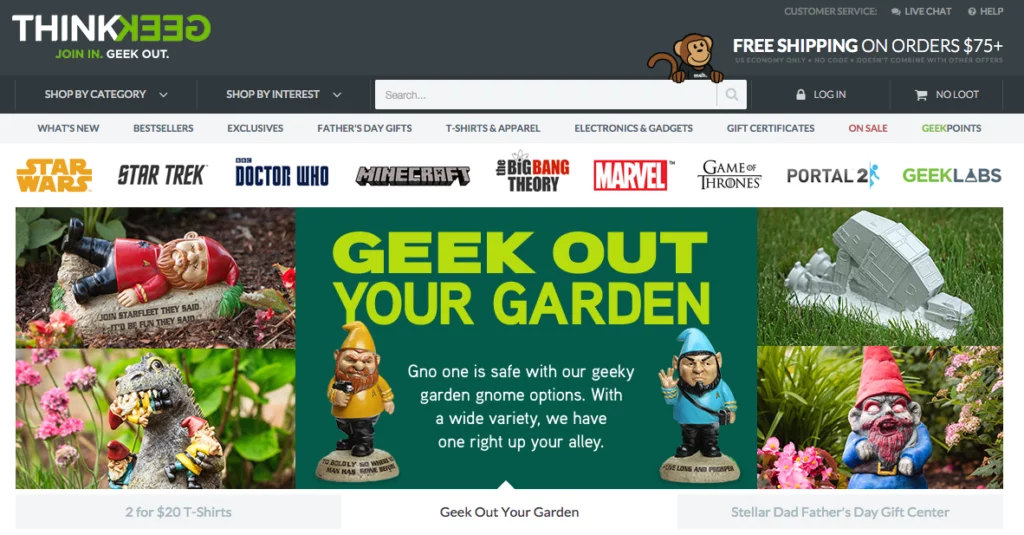
ThinkGeek is an online retailer specializing in products for fans of science fiction, gaming, and pop culture. The store offers a wide range of themed merchandise, including apparel, accessories, gadgets, and collectibles inspired by popular franchises and fandoms. ThinkGeek’s curated selection of unique and novelty items caters to passionate fans and collectors, making it a go-to destination for geek culture enthusiasts.
9. Virtual Window Shopping:
Virtual window shopping allows consumers to browse high-end online retailers, explore luxury goods, and create wish lists without necessarily making a purchase. It offers a visually immersive and aspirational shopping experience, allowing users to discover and explore luxury products from prestigious brands.
Key Features of Virtual Window Shopping:
- Luxury Brands: Virtual window shopping often features products from luxury brands and high-end designers, showcasing premium-quality goods and exclusive collections.
- Visual Appeal: These platforms prioritize visual appeal, with high-quality images, immersive videos, and interactive features that showcase products in a luxurious and aspirational context.
- Aspirational Experience: Virtual window shopping offers an aspirational experience, allowing users to explore luxury products and dream about owning them, even if they cannot afford them immediately.
- Wish List Functionality: Many virtual window shopping platforms include wish list functionality, allowing users to save the favorite items for future reference or purchase consideration.
Example: Net-A-Porter
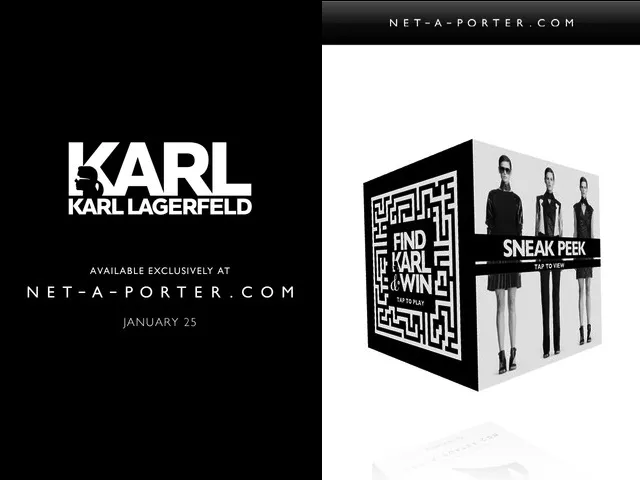
Net-A-Porter is a luxury fashion retail website offering fashion enthusiasts a sophisticated and immersive browsing experience. The platform features a curated selection of designer clothing, shoes, accessories, and beauty products from prestigious brands and emerging designers. Net-A-Porter’s sleek interface, high-quality imagery, and intuitive navigation make it a premier destination for virtual window shopping and luxury fashion inspiration.
Conclusion:
Hedonic shopping has emerged as an maltifaceted phenomenon that transcends mere acquisition of goods and services. It embodies a deeply experiential aspect of shopping, where individuals seek not just functional utility but also emotional gratification, pleasure, and self-expression.
As retailers and marketers strive to understand and cater to the complex motivations underlying hedonic shopping, they unlock new avenues for engagement, innovation, and customer loyalty. By creating immersive retail environments, curating compelling product assortments, and leveraging digital technologies to enhance the shopping experience.
Businesses can tap into the innate human desire for pleasure and enjoyment, fostering deeper and much meaningful connections with their customers and driving sustainable growth in the competitive marketplace at the same time.
FAQs on Hedonic Shopping:
Are there specific demographics or psychographics more inclined towards hedonic shopping?
While hedonic shopping behavior can vary among individuals, certain demographics and psychographics, such as younger consumers, urban dwellers, and individuals with higher disposable incomes, may be more inclined towards seeking pleasure and enjoyment in their shopping experiences.
How do online retailers create hedonic shopping experiences in the digital realm?
Online retailers create hedonic shopping experiences by providing visually appealing and user-friendly websites, offering immersive product imagery and videos, incorporating social sharing and community-building features, and providing personalized recommendations and virtual try-on tools.
Can hedonic shopping lead to impulse buying?
Yes, hedonic shopping experiences can sometimes lead to impulse buying, as individuals may be more susceptible to making unplanned purchases driven by the desire for immediate gratification or the thrill of discovery.
Are there risks associated with hedonic shopping?
While hedonic shopping can be a source of pleasure and enjoyment, it can also lead to overspending, buyer’s remorse, or dissatisfaction if individuals prioritize immediate gratification over long-term financial goals or if they purchase items that do not align with their values or needs.



